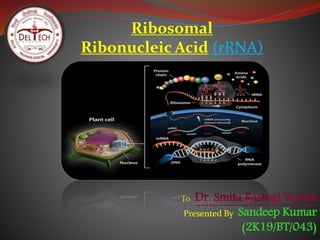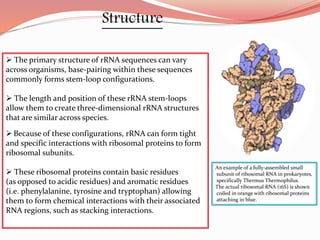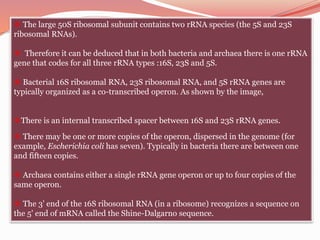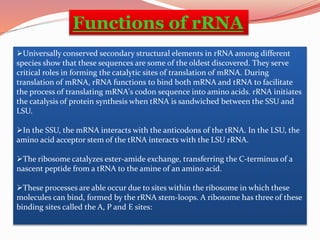Ribosomal ribonucleic acid (rRNA) is a type of non-coding RNA that is the primary component of ribosomes and essential for protein synthesis. rRNA is transcribed from ribosomal DNA and binds with ribosomal proteins to form the small and large ribosomal subunits. rRNA folds into stem loops that allow it to interact with mRNA and tRNA to catalyze the translation of mRNA into proteins. rRNA makes up about 80% of cellular RNA and plays critical roles in the ribosome's peptidyl transferase activity through conserved sequences and structures.













